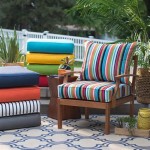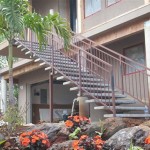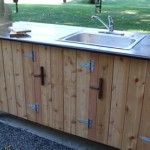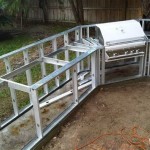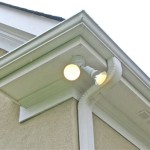Outdoor Living Space Floor Plans: Designing Your Ideal Extension of Home
Outdoor living spaces are increasingly considered integral components of residential architecture. These spaces provide opportunities for relaxation, entertainment, and connection with nature. Careful planning and design, particularly regarding floor plans, are crucial for maximizing the functionality and aesthetic appeal of these areas. The floor plan serves as the blueprint for how the space will be organized, utilized, and integrated with the existing structure and surrounding landscape.
The creation of an effective outdoor living space floor plan requires a comprehensive understanding of several key factors. These factors include the available space, the desired functions of the area, the architectural style of the house, the climate conditions, and budget constraints. These elements should be considered concurrently during the initial planning stages to ensure a cohesive and practical design.
A well-designed outdoor living space should seamlessly blend with the indoor environment, creating a natural flow between the two. Features commonly incorporated into outdoor living spaces include patios, decks, kitchens, dining areas, fireplaces, seating areas, and water features. The specific combination and arrangement of these elements will depend on the homeowner's lifestyle and preferences.
Key Considerations for Outdoor Living Space Floor Plans
Several crucial aspects merit careful consideration when developing outdoor living space floor plans. Failing to address these points adequately can lead to a space that is underutilized, aesthetically displeasing, or functionally flawed.
1. Space Assessment and Zoning: The initial step involves a thorough assessment of the available space. This includes measuring the dimensions of the area and noting any existing features, such as trees, slopes, or utilities. Accurately documenting the existing site conditions is essential for creating a realistic and workable floor plan.
Following the space assessment, the next step is to define distinct zones within the outdoor living area. Zoning involves allocating specific areas for different functions, such as cooking, dining, lounging, and playing. The size and location of each zone should be determined based on the anticipated usage and the overall flow of the space. For example, a dining area should be located close to the kitchen for easy access to food and supplies.
Traffic flow is another important consideration in zoning. Pathways should be strategically placed to provide easy access to different areas and minimize congestion. The pathways should be wide enough to accommodate multiple people moving around comfortably. The design should ensure a natural and intuitive flow that encourages movement and interaction within the space.
2. Material Selection and Sustainability: The selection of appropriate materials is critical for the durability, aesthetics, and sustainability of the outdoor living space. The materials should be chosen based on their resistance to weather conditions, their maintenance requirements, and their compatibility with the surrounding environment. Durable materials, such as pressure-treated lumber, composite decking, natural stone, and pavers, are commonly used for outdoor flooring and structures.
Sustainability is an increasingly important factor in material selection. Opting for eco-friendly materials such as recycled plastic lumber, reclaimed wood, and permeable pavers can help reduce the environmental impact of the outdoor living space. Permeable pavers allow rainwater to seep into the ground, reducing runoff and improving drainage. Recycled materials help conserve natural resources and minimize waste.
The color and texture of the materials should also be carefully considered to create a cohesive and visually appealing design. The materials should complement the architectural style of the house and the surrounding landscape. Natural colors and textures can help blend the outdoor living space with the environment, creating a sense of harmony and tranquility.
3. Integration with the Indoor Environment: A successful outdoor living space seamlessly integrates with the indoor environment, creating a natural extension of the home. The transition between the indoor and outdoor spaces should be smooth and inviting. This can be achieved through several design strategies, such as using similar flooring materials, extending the roofline, and incorporating large windows or sliding doors.
Extending the roofline over the outdoor living space can provide shade and protection from the elements, making the area more comfortable and usable. The roofline should be designed to complement the architectural style of the house and provide adequate coverage for the seating and dining areas. A covered patio or porch can be a valuable addition to any outdoor living space.
Large windows and sliding doors can create a visual connection between the indoor and outdoor spaces, allowing natural light to flood the interior and providing unobstructed views of the surrounding landscape. These features can also facilitate easy access to the outdoor living space, making it more convenient to use for entertaining and relaxation. Consider the use of energy-efficient windows and doors to minimize heat loss and gain.
The use of similar flooring materials in both the indoor and outdoor spaces can further enhance the sense of continuity. For example, if hardwood flooring is used inside, consider using a similar-looking wood-like material, such as composite decking, for the outdoor flooring. This creates a seamless transition and visually connects the two spaces.
Incorporating Specific Features into the Floor Plan
The floor plan should accommodate the specific features that the homeowner desires for their outdoor living space. These features can range from simple seating areas to elaborate outdoor kitchens. The placement and size of each feature should be carefully considered to ensure that the space is functional and aesthetically pleasing.
Outdoor Kitchens: Outdoor kitchens are becoming increasingly popular as homeowners seek to expand their culinary activities beyond the confines of the indoor kitchen. A well-designed outdoor kitchen should include adequate counter space, a grill, a sink, and storage for cooking utensils and supplies. Depending on the homeowner's needs, additional appliances such as a refrigerator, a side burner, and a smoker may also be included.
The location of the outdoor kitchen should be carefully considered to minimize smoke and noise intrusion into the indoor living areas. It should also be located close to the dining area for easy serving and cleanup. Proper ventilation is essential to prevent the buildup of smoke and odors. A range hood or a built-in ventilation system may be necessary, depending on the type of grill and the amount of cooking that will be done.
The materials used for the outdoor kitchen should be durable and weather-resistant. Stainless steel, concrete, and stone are commonly used for countertops and cabinets. The layout of the outdoor kitchen should be efficient and ergonomic, with all of the necessary tools and supplies within easy reach. Consider incorporating features such as a built-in bar, a pizza oven, or a wine cooler to enhance the functionality of the outdoor kitchen.
Fire Features: Fire features, such as fireplaces and fire pits, can add warmth and ambiance to the outdoor living space, extending its usability into the cooler months. Fireplaces can serve as a focal point for the seating area, providing a cozy and inviting atmosphere. Fire pits are a more casual option, perfect for gathering around with friends and family.
The location of the fire feature should be carefully considered to ensure that it is safe and does not pose a fire hazard. It should be placed away from flammable materials such as trees, shrubs, and fences. Local building codes and regulations should be consulted to ensure compliance with safety standards. The size of the fire feature should be appropriate for the size of the outdoor living space.
Fireplaces can be constructed from a variety of materials, including brick, stone, and concrete. Fire pits can be purchased in a variety of styles and sizes, from portable propane models to custom-built wood-burning pits. Consider incorporating features such as a seating wall, a built-in wood storage area, or a decorative mantel to enhance the aesthetics of the fire feature.
Water Features: Water features, such as fountains, ponds, and waterfalls, can add a sense of tranquility and serenity to the outdoor living space. The sound of running water can be soothing and relaxing, creating a peaceful oasis. Water features can also attract birds and other wildlife, enhancing the connection with nature.
The size and style of the water feature should be appropriate for the size and style of the outdoor living space. A small fountain may be suitable for a small patio, while a larger pond or waterfall may be more appropriate for a larger yard. The location of the water feature should be carefully considered to ensure that it is visible from the seating areas and does not interfere with traffic flow.
Water features can be constructed from a variety of materials, including stone, concrete, and fiberglass. They can be designed to be either formal or informal, depending on the homeowner's preferences. Consider incorporating features such as lighting, aquatic plants, and fish to enhance the beauty and functionality of the water feature. Regular maintenance is essential to keep the water feature clean and healthy.
Addressing Practical Considerations
Beyond the aesthetic and functional aspects, several practical considerations should be addressed in the outdoor living space floor plan. These considerations include drainage, lighting, privacy, and accessibility. Failing to address these issues can lead to problems down the road.
Drainage: Proper drainage is essential to prevent water from pooling on the surface and causing damage to the outdoor living space. The floor plan should incorporate adequate drainage solutions, such as sloping the surface away from the house, installing drains, and using permeable paving materials. Poor drainage can lead to erosion, mold growth, and structural damage.
The slope of the surface should be gradual and consistent to ensure that water flows away from the house and towards the drainage system. Drains should be strategically placed to capture runoff and direct it away from the outdoor living space. Permeable paving materials allow water to seep into the ground, reducing runoff and improving drainage. Consider the use of French drains or swales to manage excess water.
Lighting: Adequate lighting is essential for safety and functionality in the outdoor living space, especially during the evening hours. The floor plan should incorporate a variety of lighting options, including ambient lighting, task lighting, and accent lighting. Ambient lighting provides general illumination, task lighting focuses on specific areas such as the outdoor kitchen, and accent lighting highlights architectural features and landscaping.
Lighting fixtures should be chosen based on their durability, energy efficiency, and aesthetic appeal. LED lighting is a popular choice for outdoor applications due to its long lifespan and low energy consumption. Lighting controls, such as dimmers and timers, can be used to adjust the intensity and duration of the lighting. Consider the use of motion sensors to automatically turn on lights when someone enters the area.
Privacy: Privacy is an important consideration for many homeowners, especially in urban or suburban settings. The floor plan should incorporate design elements that provide privacy from neighbors and passersby. These elements can include fences, walls, hedges, trees, and screens. The height and density of the privacy barriers will depend on the desired level of privacy.
Fences and walls can provide a solid barrier, while hedges and trees can offer a more natural and aesthetically pleasing solution. Screens can be used to create partial privacy, allowing some light and airflow to pass through. The placement of the privacy barriers should be carefully considered to maximize their effectiveness and minimize their impact on the surrounding environment.
Accessibility: The outdoor living space should be accessible to people of all ages and abilities. The floor plan should incorporate features that make the space easy to navigate, such as ramps, wide pathways, and level surfaces. Consider the use of non-slip materials for flooring and pathways. Handrails should be installed on ramps and stairs to provide additional support.
The height of seating and tables should be comfortable for people of different heights. Consider incorporating features such as raised garden beds to make gardening more accessible to people with mobility limitations. The Americans with Disabilities Act (ADA) provides guidelines for accessible design, which can be used as a reference when planning the outdoor living space.
By carefully considering these practical considerations, the homeowner can create an outdoor living space that is safe, functional, and enjoyable for everyone.

Outdoor Living Spaces

12 Floor Plans With Indoor Outdoor Living Houseplans Blog Com

Looking For Home Designs With Indoor Outdoor Synergy These House Plans Have It

Luxury Modern Home Plan With Expansive Outdoor Living Spaces And Pool Concept 871012jen Architectural Designs House Plans

Design Create And Visualize Outdoor Areas With Roomsketcher

Outdoor Living Spaces From Structures To Side Yards

12 Floor Plans With Indoor Outdoor Living Houseplans Blog Com

Traditional Farmhouse Home Plans With Wrap A Around Porch

Exclusive Farmhouse Plan With Large Outdoor Living Space 46409la Architectural Designs House Plans

Plan 56408sm 4 Bed Acadian With Generous Outdoor Living Space House Plans Country New




